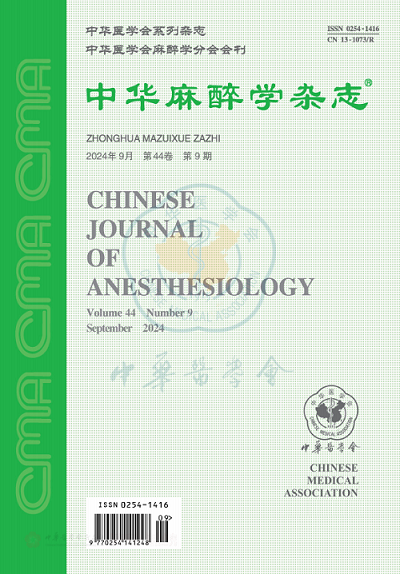Effect of remote ischemic preconditioning on reperfusion arrhythmia in rats and the role of Shh/Gli1 signaling pathway
Q4 Medicine
引用次数: 0
Abstract
Objective To evaluate the effect of remote ischemic preconditioning (RIPC) on reperfusion arrhythmia and the role of Sonic hedgehog (Shh)/glioma associated oncogene homolog 1 (Gli-1) signaling pathway in rats. Methods Forty clean-grade healthy male SD rats, aged 6-8 weeks, weighing 220-280 g, were divided into 4 groups (n=10 each) using a random number table method: sham operation group (Sham group), myocardial I/R group (I/R group), remote ischemic preconditioning group (RIPC group) and cyclopamine + remote ischemic preconditioning group (CYC+ RIPC group). Myocardial I/R was produced by occlusion of left anterior descending branch of coronary artery for 30 min followed by 2 h reperfusion in anesthetized rats.In RIPC group, an elastic rubber tourniquet was used to block the lower limb blood flow for 10 min in the right groin and then released for 30-min reperfusion, and then the myocardial I/R model was established.In CYC+ RIPC group, a Shh specific inhibitor cyclopamine 10 mg/kg was intraperitoneally injected at 30 min before ischemia, and then RIPC was performed.The development of ventricular arrhythmia was recorded.Blood samples were taken at 120 min of reperfusion for determination of the concentrations of serum creatine kinase-MB (CK-MB) and cardiac troponin I (cTnI) using a 7600 automatic biochemical analyzer.The myocardial tissues in the ischemic area were taken after collecting blood for examination of pathological changes and for determination of tumor necrosis factor α (TNF-α) content (by enzyme-linked immunosorbent assay), cell apoptosis (using TUNEL), expression sites of Shh and Gli1 (by immunofluorescence) and expression of Shh and Gli1 (by Western blot). AI was calculated. Results Compared with Sham group, the incidence and times of arrhythmia were significantly increased, the total duration of arrhythmia was prolonged, the arrhythmia score was increased, the serum cTnI and CK-MB concentrations, myocardial TNF-α content and AI were increased, the expression of Shh and Gli1 was up-regulated (P 0.05). Compared with group RIPC, the incidence and times of arrhythmia were significantly increased, the total duration of arrhythmia was prolonged, the serum cTnI and CK-MB concentrations, myocardial TNF-α content and AI were increased, and the expression of Shh and Gli1 was down-regulated in group CYC+ RIPC (P<0.05). Conclusion RIPC can reduce reperfusion arrhythmia, and the mechanism is related to activating Shh/Gli1 signaling pathway in rats. Key words: Ischemic preconditioning; Extremities; Hedgehog proteins; Myocardial reperfusion injury; Arrhythmias, cardiac远程缺血预处理对大鼠再灌注心律失常的影响及Shh/Gli1信号通路的作用
目的探讨远端缺血预处理(RIPC)对大鼠再灌注心律失常的影响及Shh /胶质瘤相关癌基因同源物1 (gli1)信号通路的作用。方法选用6 ~ 8周龄健康雄性SD大鼠40只,体重220 ~ 280 g,采用随机数字表法分为4组,每组10只:假手术组(sham组)、心肌I/R组(I/R组)、远端缺血预处理组(RIPC组)和环巴胺+远端缺血预处理组(CYC+ RIPC组)。麻醉大鼠阻断冠状动脉左前降支30min,再灌注2h,产生心肌I/R。RIPC组在右腹股沟用弹性橡胶止血带阻断下肢血流10 min后再灌注30 min,建立心肌I/R模型。CYC+ RIPC组在缺血前30 min腹腔注射Shh特异性抑制剂环巴胺10 mg/kg,然后进行RIPC。记录室性心律失常的发生情况。再灌注120 min取血,7600全自动生化分析仪测定血清肌酸激酶- mb (CK-MB)和心肌肌钙蛋白I (cTnI)浓度。采血后取缺血区心肌组织,检查病理变化,检测肿瘤坏死因子α (TNF-α)含量(酶联免疫吸附法)、细胞凋亡(TUNEL法)、Shh、Gli1表达位点(免疫荧光法)和Shh、Gli1表达位点(Western blot法)。人工智能是计算出来的。结果与Sham组比较,大鼠心律失常发生率、次数显著增加,心律失常总持续时间延长,心律失常评分升高,血清cTnI、CK-MB浓度升高,心肌TNF-α含量、AI水平升高,Shh、Gli1表达上调(P < 0.05)。与RIPC组比较,CYC+ RIPC组大鼠心律失常发生率、次数显著增加,心律失常总持续时间延长,血清cTnI、CK-MB浓度升高,心肌TNF-α含量和AI升高,Shh、Gli1表达下调(P<0.05)。结论RIPC可减轻大鼠再灌注心律失常,其机制可能与激活Shh/Gli1信号通路有关。关键词:缺血预处理;四肢;刺猬蛋白;心肌再灌注损伤;心律失常、心脏
本文章由计算机程序翻译,如有差异,请以英文原文为准。
求助全文
约1分钟内获得全文
求助全文

 求助内容:
求助内容: 应助结果提醒方式:
应助结果提醒方式:


